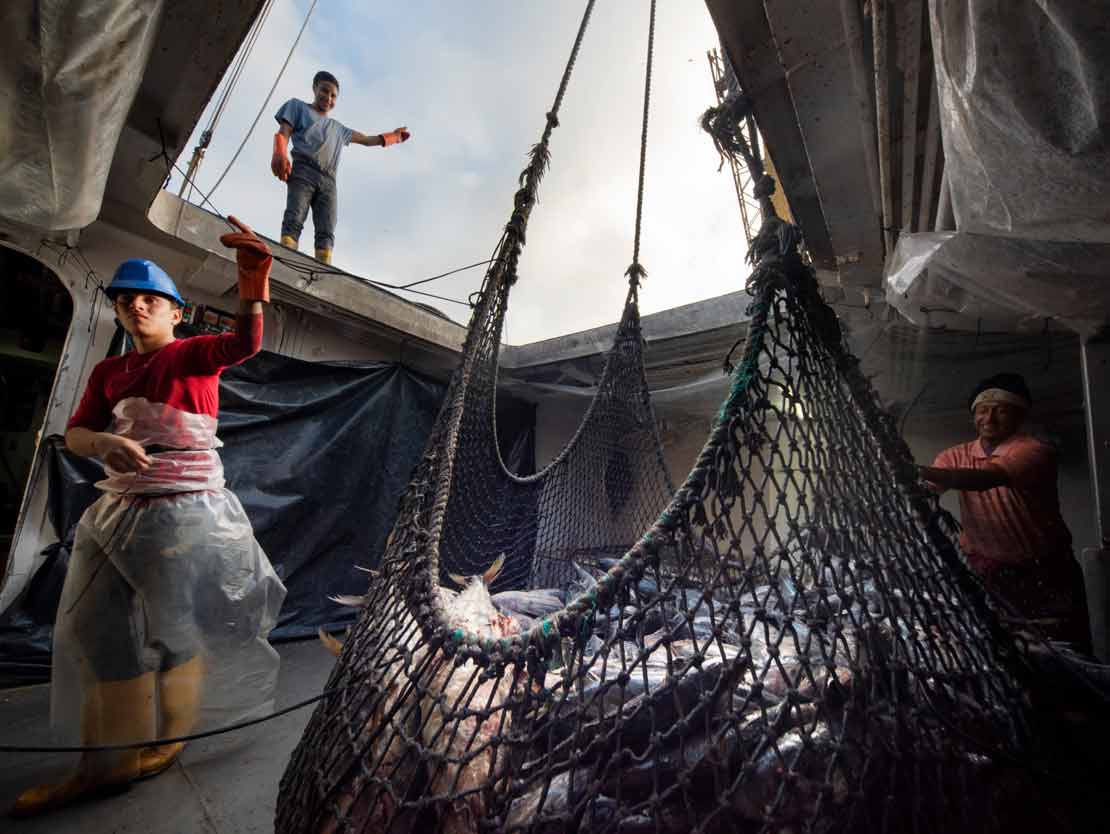Pre-competitive engagement and seafood markets
For individual businesses, addressing the environmental impacts of their operations can be costly at the outset. Being first to implement more sustainable practices can put innovators at a competitive disadvantage in the short-term, as others may be reluctant to take the same financial plunge or wish to ride the coattails of early adopters. The reality for the seafood sector is that many baseline sustainability conditions on which industry operates cannot be improved by just one actor, yet constitute a risk to all.
Ensuring the longevity of the resources from which businesses make their profit is in the collective interest of all companies that rely on that resource. Rather than acting individually, businesses can choose to band together, pooling resources and efforts to pre-competitively address a shared problem for the benefit of all parties faster and more efficiently than individual actors would be able to do on their own. In the seafood industry, companies have successfully engaged pre-competitively to:
- Develop broadly accepted and consistent asks of supply chains
- Leverage combined purchasing power to pressure suppliers to evolve
- Fund improvement work at the fishery — or farm — level
Not only can collaborating pre-competitively mitigate environmental impacts faster and more efficiently, it can be a successful long-term solution to problems such as supply volatility that can cripple a business financially and have severe impacts on companies’ profitability margins. Pre-competitive platforms are therefore not just a good way to solve environmental or social issues, but also an essential component of a sustainable and profitable industry into the future.

© Antonio Busiello / WWF-US
A case study for pre-competitive engagement
In seafood supply chains, pre-competitive engagement within industry is becoming more and more of an attractive proposition, and perhaps in some cases a requirement, to ensure business longevity. It is increasingly evident that companies’ priorities are transitioning from market competition to resource competition. For businesses that are wholly dependent on a natural resource base for their continued viability, this is an inevitable paradigm shift that is often borne out of a lack of sustainable resource management. Including pre-competitive collaboration as a tool in a company’s arsenal to help manage and mitigate key business risks is critical to ensure that their business can function and remain profitable in perpetuity. Resource security is a risk that no one company can address alone. One example of this is the National Fisheries Institute (NFI) Crab Council (CC) which has proven to be a successful model that can be replicated across commodity/species groups within the global seafood industry.
The NFI CC is a unique industry-led association focused on securing the sustainability of the blue swimming crab (BSC) in Southeast Asia through collective action and investment by the end market buyers. With its members accounting for approximately 62% of all BSC imports into the U.S. from Southeast Asia in 2017, the Council represents a strong coalition of industry leaders committed to ensuring the long-term viability of these fisheries, fishing communities and, by extension, their businesses.
The formation of the Council stems from lessons learned in the Chesapeake Bay, where overfishing resulted in the collapse of the blue crab fishery and, in turn, severe negative impacts to the companies sourcing product from the depleted stock. Fishery collapse is an environmental issue that not only negatively impacts all who depend on the resource but also, requires corrective action from all in order to achieve improvement. In the case of the Southeast Asian BSC, industry leaders recognized the imperativeto collectively and pre-emptively address the challenges of overfishingand weak fishery mismanagement in Southeast Asia in order to prevent the problems that they had witnessed in Chesapeake Bay.
The Crab Council formation established a mechanism by which members of the Council would make financial contributions to establish a pool of funds to invest in fishery management interventions, improvements and the overall future of the fishery. Each CC member contributes a payment based on their total annual pounds of BSC product imported into the U.S.These pooled funds are then used to implement Fishery Improvement Projects (FIPs) in source countries in Southeast Asia.
From the Council’s formation through 2017, more than $2.1 million was invested in the region.
Working in tandem with in-country partners to ensure acceptance and adoption of improved and sustainable fishery management practices, the CC has established a mechanism that may be relevant to other seafood sectors in addressing funding deficits associated with fishery management, monitoring and enforcement.This approach is particularly relevant in developing markets as the CC realizes that the local and national governments may not be able to muster the political will or monetary resources needed to enforce rules in artisanal fisheries, which is a major concern in the Southeast Asian BSC fishery and many others around the world.
Without the Council and its contributions to the fishery, much of the improvement work on Southeast Asian BSC would cease to exist. While the Council provides a workable and successful model of pre-competitive engagement to fund resource management improvements, more and improved data tracking is needed at the on-the-ground level in order to confirm that these contributions are enough to support full fishery recovery. That said, this unique collaborative model– in an otherwise fragmented industry– provides an example of how to develop a long-term and robust funding mechanism to address the costs of fisheries management reform in multiple countries.
To learn more, please refer to the following reports on the Southeast Asian Blue Swimming Crab. Developed in parallel, The Case for Pre-Competitive Collaboration (produced by Wilderness Markets) explores the history and development of the NFI Crab Council while the study of the Impact of Fishery Management on Buyer Profitability (produced by Vivid Economics) explores how fishery mismanagement and volatility at the base of the supply chain has negative impacts to business profitability.


